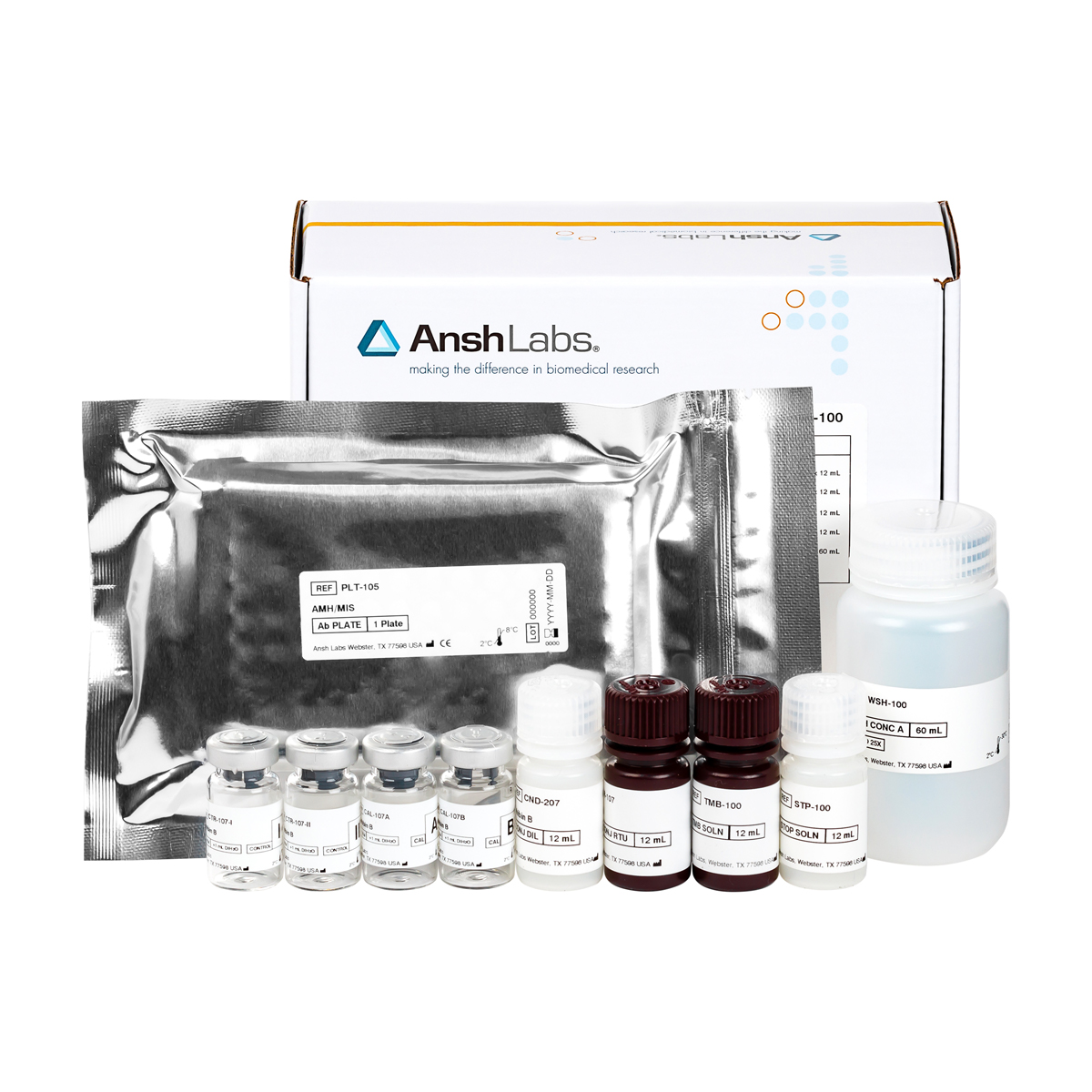The Bovine GDF-15 enzyme linked immunosorbent assay (ELISA) kit provides materials for the quantitative measurement of GDF-15 in bovine serum.
| Catalog Number | |
|---|---|
| Packaging | 96 well microtiter |
| Detection | HRP-based ELISA, colorimetric detection by dual wavelength absorbance at 450 nm and 630 nm as reference filter |
| Assay Time | 2 hours |
| Dynamic Range | 6, 3.8-824 pg/mL |
| Limit of Detection | 0.42 pg/mL |
| Sample Size | 25 µL |
| Sample Type | Serum |
| Shelf Life | 24 months |
| Species Reactivity | Bovine Serum, Canine Serum, Caprine Serum, Equine Serum, Feline Serum, Murine Serum, Ovine Serum, Porcine Serum, Squirrel Monkey Serum, Vervet Monkey Serum |
| Availability | Worldwide |
| Analyte | GDF-15 |
Growth/differentiation Factor 15 (GDF-15, also called as MIC-1, NAG-1 and NRG-1, Uniprot: Q99988) is a divergent member of the TGF-b superfamily of growth factors. It is encoded in humans by a gene in chromosome 19. The human GDF-15 gene encodes for a protein of 308 amino acid residues which consists of a signal sequence (residues 1-29), pro-domain (30-194) and mature growth factor domain (195-308). The protein is secreted from the producing cell and the precursor containing the pro- and mature domains is proteolytically processed by furin-like protease, typically in the Golgi complex, but sometimes also an unprocessed protein is secreted. Two mature domains dimerize forming a typical TGF-b-like structure with four b-strands and an a-helix in each protomer, with an interfacial disulfide stabilizing the mature growth factor. The molecular weight of a mature GDF-15 dimer is 25 kDa.
GDF-15 expression in healthy subjects is abundant in placenta, followed by the prostate and very low levels in the bladder, kidney, colon, stomach, liver, gall bladder, pancreas, and endometrium(1-3). GDF-15 is expressed by cardiomyocytes, adipocytes, macrophages, endothelial and vascular smooth muscle cells(4). High circulating GDF-15 concentration are in general related to inflammation, myocardial ischemia, and cancer except for in pregnancies. It is often induced under stress to maintain cell and tissue homeostasis(5-6).
The circulating GDF-15 levels in cows and its biological role has not been explored.
References:
1. Kamiya R, Asakura S. Helical transformations of Salmonella flagella in vitro. J Mol Biol. (1976) 106:167–86. doi: 10.1016/0022-2836(76)90306-5
2. Nazarova NY, Chikhirzhina GI, Tuohimaa P. Calcitriol induces transcription of the placental transforming growth factor β gene in prostate cancer cells via an androgen-independent mechanism. Mol Biol. (2006) 40:72–6. doi: 10.1134/S0026893306010110.
3. Uhlen M, Fagerberg L, Hallstrom BM, Lindskog C, Oksvold P, Mardinoglu A, et al. Tissue-based map of the human proteome. Science. (2015) 347:1260419. doi: 10.1126/science.1260419.
4. Tsai VWW, Husaini Y, Sainsbury A, Brown DA, Breit SN. The MIC-1/GDF15-GFRAL pathway in energy homeostasis: implications for obesity, cachexia, and other associated diseases. Cell Metab. (2018) 28:353–68. doi: 10.1016/j.cmet.2018.07.018
5. Adela R, Banerjee SK. GDF-15 as a target and biomarker for diabetes and cardiovascular diseases: a translational prospective. J Diabetes Res. (2015) 2015:490842. doi: 10.1155/2015/490842
6. Guenancia C, Kahli A, Laurent G, Hachet O, Malapert G, Grosjean S, et al. Pre-operative growth differentiation factor 15 as a novel biomarker of acute kidney injury after cardiac bypass surgery. Int J Cardiol. (2015) 197:66–71. doi: 10.1016/j.ijcard.2015.06.012.
